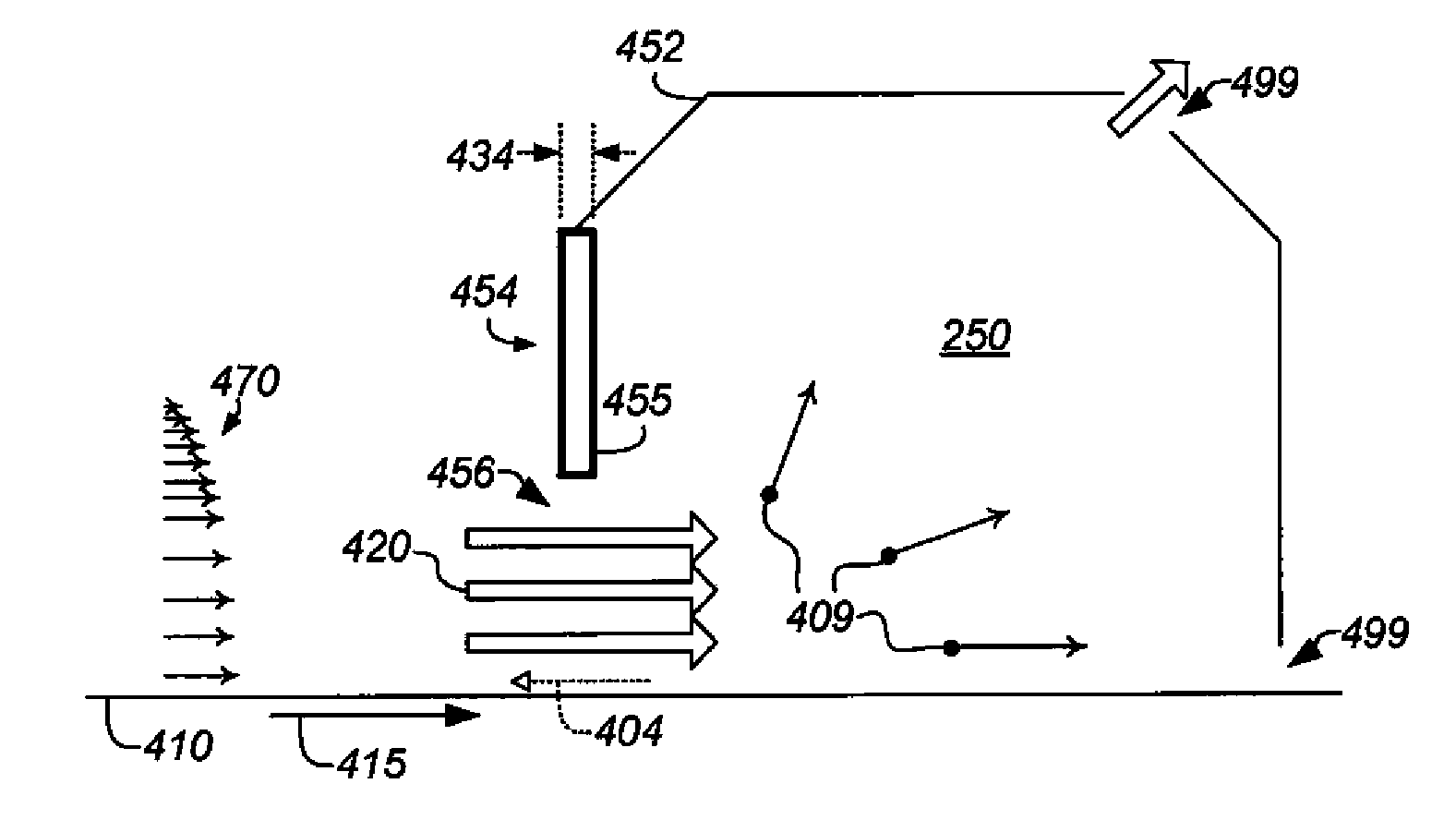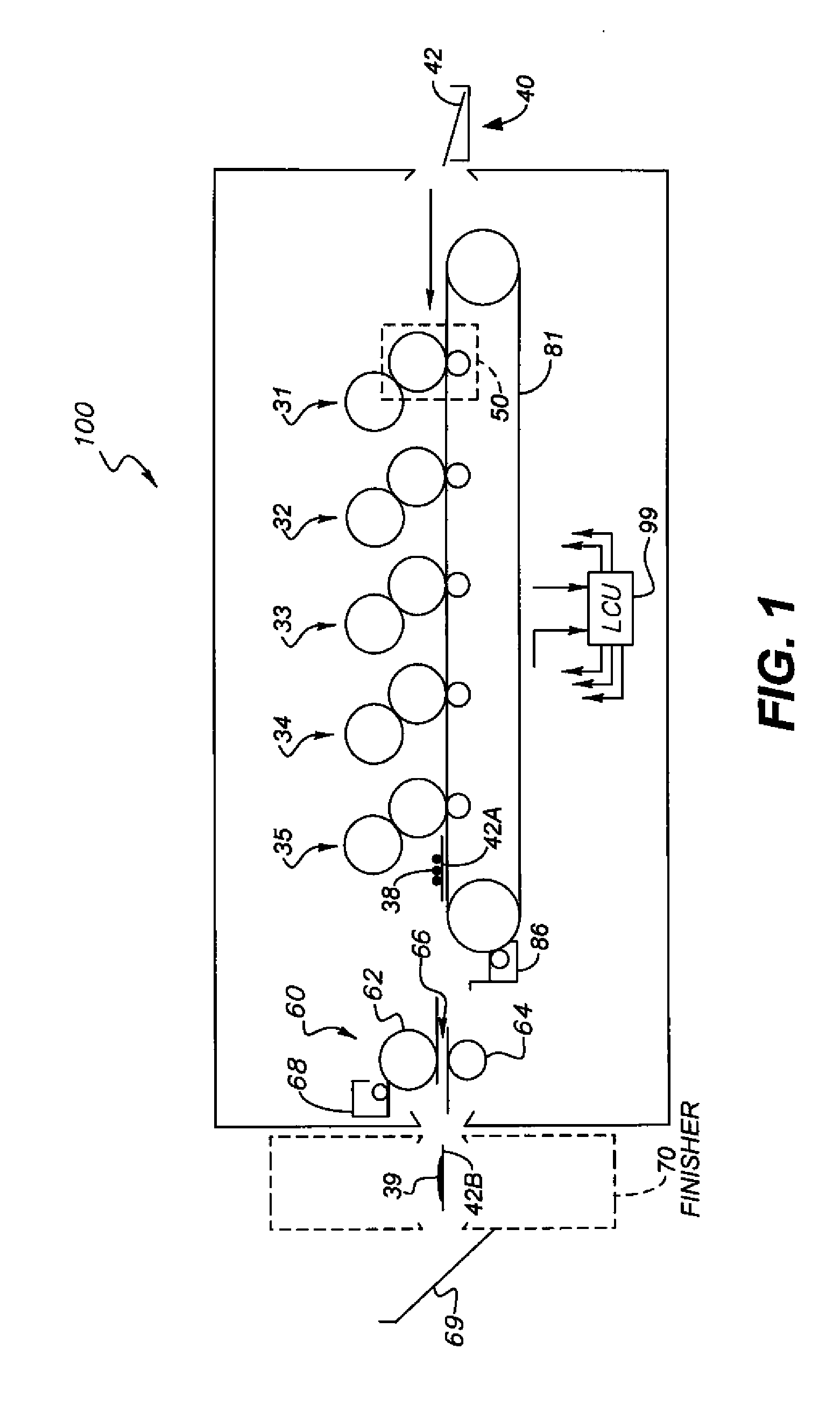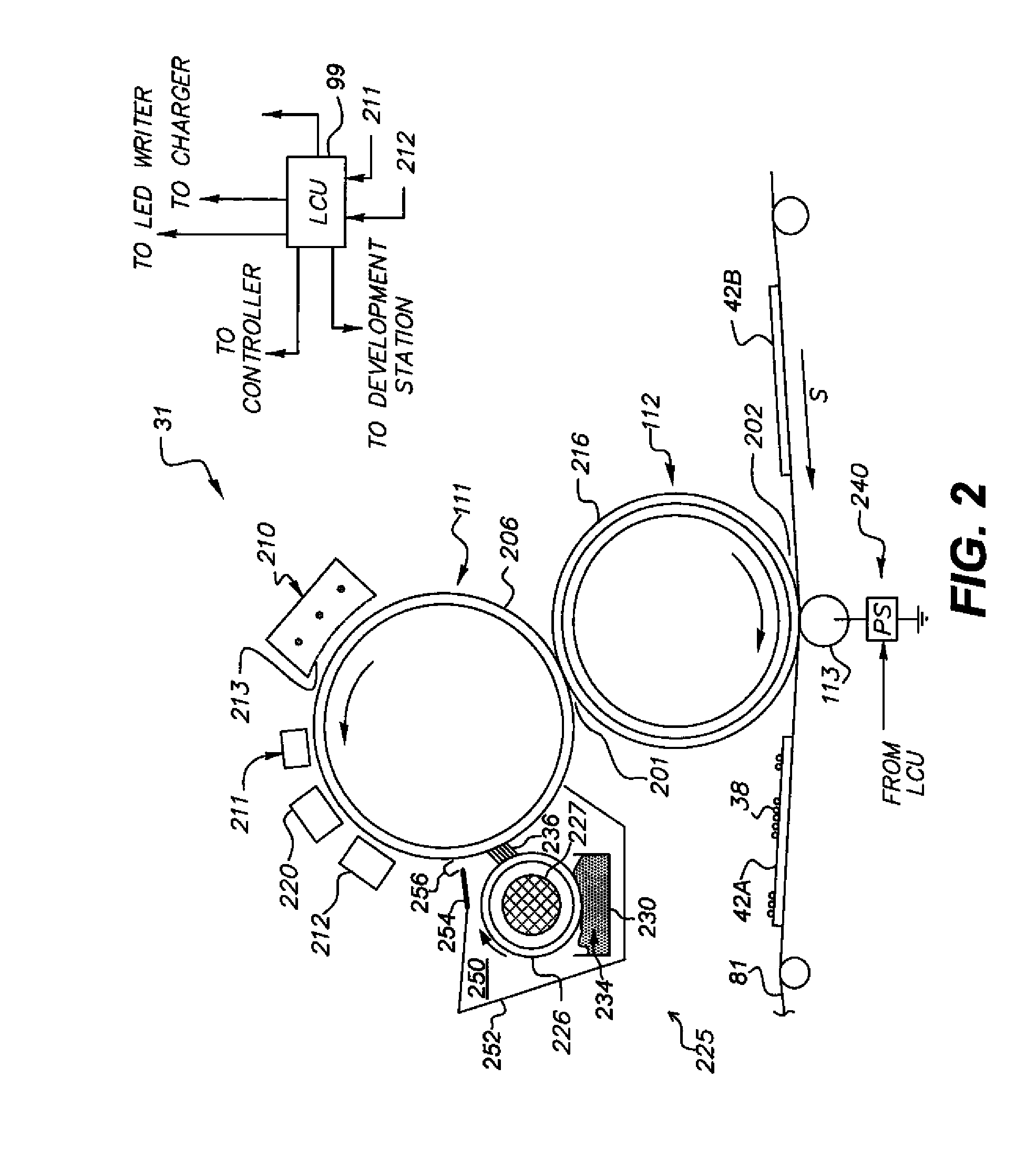Reducing contamination by regulating flow
a technology of regulating flow and reducing contamination, applied in optics, instruments, electrography/magnetography, etc., can solve the problems of reducing image quality and printer reliability, increasing the risk of damage to the roller in contact with the seal, and mechanical wear between the seal and the member it is in contact, so as to reduce backflow, reduce the flow of contaminating substances, and reduce the effect of surface wear
- Summary
- Abstract
- Description
- Claims
- Application Information
AI Technical Summary
Benefits of technology
Problems solved by technology
Method used
Image
Examples
Embodiment Construction
[0029]FIG. 4 shows an apparatus for retaining a contaminating substance 409 in working volume 250 according to an embodiment. A “contaminating substance,” or “contaminant,” as used herein, is any matter (solid, liquid, gas, plasma, or combination, e.g., suspension) that can contaminate a particular surface or part on contact therewith. Not all contaminating substances or contaminants deposit on or contaminate all surfaces or parts, but such substances have the potential to do so. It is therefore desirable to restrict the passage of contaminating substances out of working volumes in which they are found, and in which they are preferably contained. An example of undesirable contamination is the deposition of toner particles on a photodiode in a densitometer in a printer, as described in U.S. Pat. No. 5,903,800 to Stern et al., issued May 11, 1999, the disclosure of which is incorporated herein by reference.
[0030]Movable surface 410 moves in direction 415 and is disposed adjacent to wo...
PUM
 Login to View More
Login to View More Abstract
Description
Claims
Application Information
 Login to View More
Login to View More - R&D
- Intellectual Property
- Life Sciences
- Materials
- Tech Scout
- Unparalleled Data Quality
- Higher Quality Content
- 60% Fewer Hallucinations
Browse by: Latest US Patents, China's latest patents, Technical Efficacy Thesaurus, Application Domain, Technology Topic, Popular Technical Reports.
© 2025 PatSnap. All rights reserved.Legal|Privacy policy|Modern Slavery Act Transparency Statement|Sitemap|About US| Contact US: help@patsnap.com



